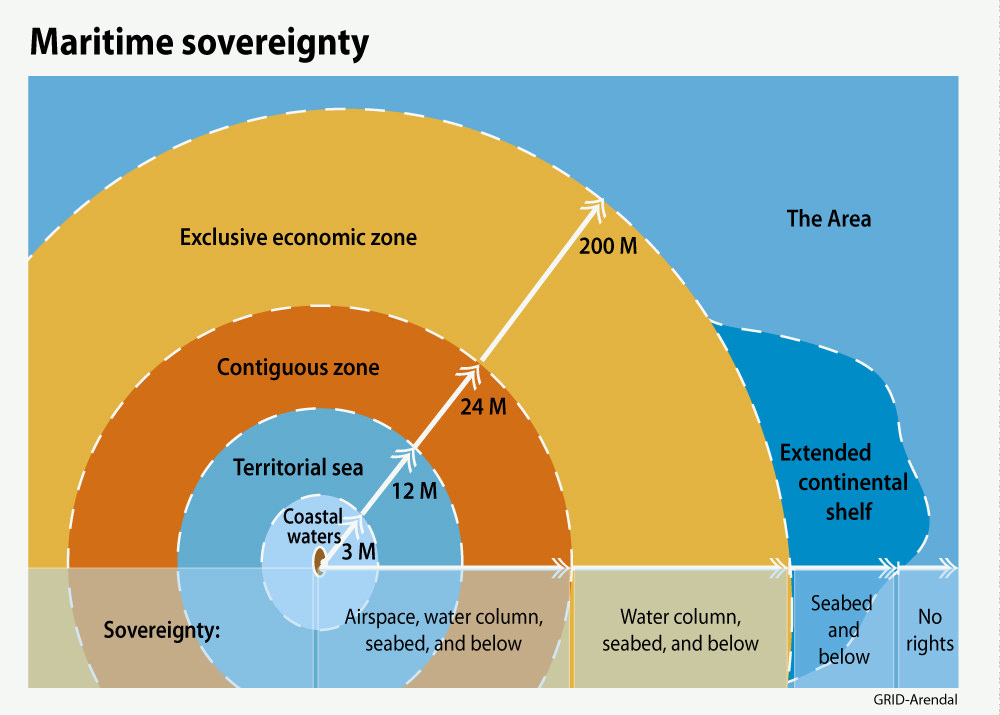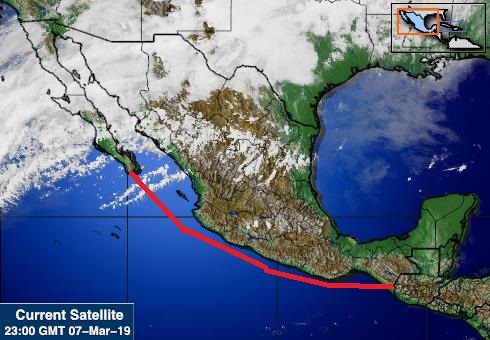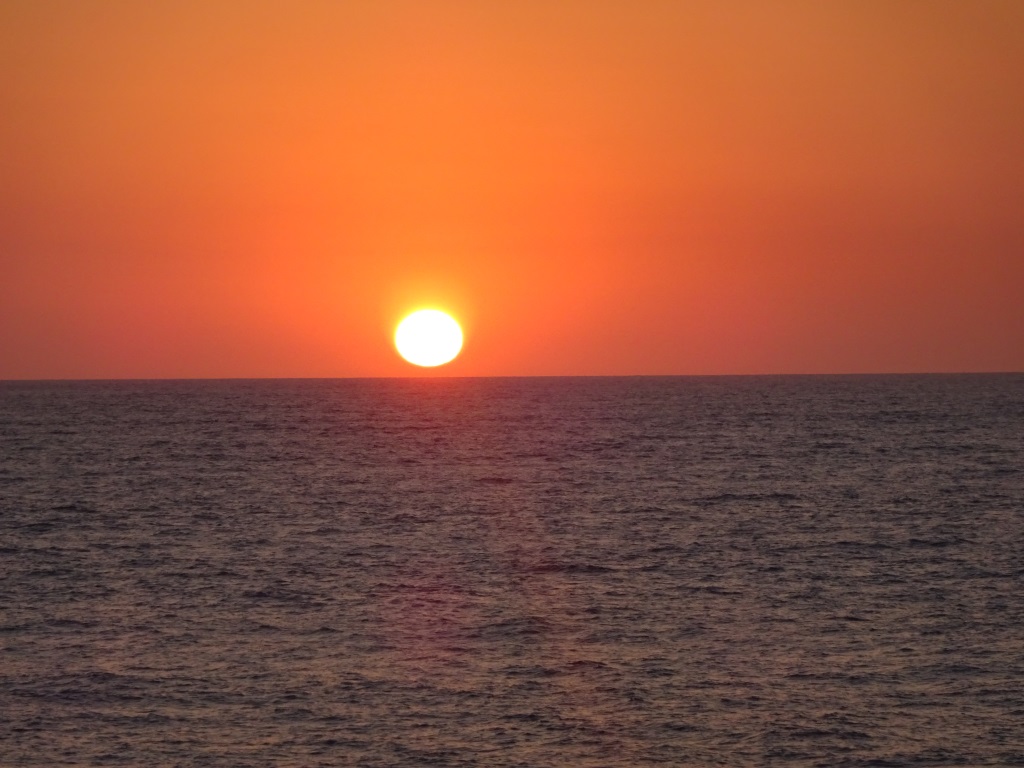Today is the first day of two days at sea, as we sail along the Mexican coast. Mexico is a much larger country than a lot of people realize. From San Diego / Ensenada to Puerto Chiapas takes the Volendam 3 days at full speed (21 knots). We are stopping at Puerto Chiapas but that is right on the border with Guatemala so we are keeping the pedal to the metal to maintain the schedule. Which is a challenge as we have the ocean current against us all the way to the Panama Canal.
As sailing in a straight line is the shortest route as long as you sail along the coast, (as we know for an ocean crossing a Great Circle is shorter as it follows the curvature of the earth) we are at the moment are quite far out. Later on we will come closer when we follow the curve of the coast line but we will be most of the time more than 12 miles offshore. 12 miles is the minimum most ships keep nowadays as it means you are always in international waters. The 3 mile zone is territorial waters or coastal and we do not enter that one, unless we are – close coastal- and entering/leaving a port. Then there is the 12 mile zone over which each country has full jurisdiction for rules and regulations, varying from safety, security to environmental and reporting. We follow all the regulations and internationally they are roughly the same but each country can implement these regulations in its own way. (And with its own unique form to complete…………………..) The next zone is the 24 miles zone. Still belongs to a country but not in real ownership but in the form of controlling………………… then there is the EEC, The Economic Exclusion Zone where only one country can drill for oil or gas, or fish and then there is Mare Liberum or the free sea.

This what it would look like if you are sailing near an island. When close to various countries the shape depends on the the lay of the islands, what has been negotiated (or fought over) and what makes sense. More and more headaches for the poor navigator.
One of those funny different ways of reporting is with the various forms a country might design and implement. When you enter an area where a certain country has implemented certain requirements, then you really have to be on the ball. Some countries require pre notifications of arrival or passage. Some want the times in GMT, some in local time. If these requirements come from two countries next to each other then the reporting time might be very close together and the navigator has to make sure to keep the forms (faxing still exist) apart; get the time right and get the reporting moment right. Then it is not unusual once within Radar range that you have to report all the information that was faxed again orally over the VHF. One thing that the navigators dread is when they are asked for the name of the captain. And I have followed some exasperating conversations between an English officer on the ship and a Portuguese shore station to get my name over the right way. Phonetically that should be easy, although long: Sierra, Charlie, Hotel, Oscar, Oscar, November, Delta, Echo, Romeo, Bravo, Echo, Echo , Kilo. But I am in somebody’s log as schoooebekk, caused by:
Sierra, Charlie, Hotel, Oscar, Oscar, QUE ?, repeating OSCAR, November, Delta, echo, Romeo, QUE ? Bravo, Echo, QUE?, Echo , Kilo, QUE, repeating Kilo etc. etc. Life must be wonderful if your name is Captain Bos.
So the shipping lines have moved further and further away from the coast. Sightseeing with the guests is almost out of the question and cutting corners as well as there is always some Big Brother watching, either by radar or directly by satellite feed. (And of course they have a checklist with questions!)

No clouds at all today. This morning the sun rose as a reddish yellow fiery ball from the water towards the East as there was nothing to distort it.
The weather today was very good. Wind still in the morning and then in the afternoon a North Westerly wind picked up, that means it was blowing with the ship, and it was about 6 knots faster in velocity than the ship and thus there was just this gentle breeze coming over the deck which clustered a lot of guests to their loungers and deck chairs for most of the day. Tomorrow should be similar and then we will pass the Bay of Tehuantepec in the late evening, where things can be different and outright nasty. Not in the planning at the moment but it only takes one cold front in the Caribbean to drop a bit down and bingo a Tehuantepeccer starts blowing within no time.

Sunshine this evening at 19.05 hrs. Ships Time. Not a cloud in the sky. But we did not get the Green Flash. Obviously the atmospheric conditions were just not right.

March 9, 2019 at 3:29 am
There is an old saying…”Red Sails in the Morning…Sailors take warning..
Red Sails at Night ….Sailors Delight”
Any truth to that??
***Star
March 9, 2019 at 10:46 pm
Thank you for reading my blog.
As a matter of fact, yes. At least according to the law of averages. The logic from the sailing days was if there were no clouds in the evening, then it would be a while before clouds would arrive. So a quiet night guaranteed. If there were no clouds in the morning, then there would be fair chance that something less nice would arrive in due course.
best regards
Capt. Albert